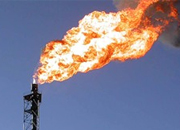According to the results of 2010, the total LPG production by SIBUR enterprises that year increased to 3.4 million tonnes, while this figure for 2009 stood at 3.3 million tonnes. LPG deliveries to the domestic motor fuel and household heating markets in 2010 rose to 685 thousand tonnes compared to 594 thousand tonnes in 2009. While, in January and February 2010, monthly deliveries in these segments amounted to 46.5 and 47.8 thousand tonnes respectively, they had grown to 55.6 thousand tonnes in November 2010 and 55.3 thousand tonnes in December 2010.
By the end of 2010, total LPG exports rose to 1.3 million tonnes (vs. 1.1 million tonnes in 2009). The main source of growth in exports are the company’s internal resources, which is associated with an increase in output (+0.1 million tonnes), as well as the partial substitution of LGP with naptha in SIBUR’s petrochemical production operations (0.2 million tonnes). Accordingly, LPG deliveries to SIBUR’s own petrochemical production companies declined from 1.4 million tonnes in 2009 to 1.2 million tonnes in 2010.
In addition, an important indicator in balancing domestic supply and demand is the situation regarding prices. In general, during the year, dynamics regarding the average prices for the direct sale of LPG from plants did not exceed the growth in production costs (the cost of acquiring raw hydrocarbons, energy, labour, and transportation costs).
In order to further increase openness and transparency regarding its operations on the domestic market, in 2010, SIBUR was the first Russian manufacturer to decide to begin implementing a share placement on the stock market regarding its LPG. While the volume of stock sales totalled only 50 tonnes in June 2010, by the end of the year, it had already reached 600 tonnes per month.
The further prospects of the Russian LPG market are associated with the rapid growth of output relative to domestic consumption levels by increasing the volume of processing of associated petroleum and natural gas. The increasing existence of a net surplus on the domestic market, involving a significant surplus of supply over demand, ultimately increases competition among suppliers, including with respect to matters of price formation.
SIBUR’s strategic guideline involves the processing of liquefied petroleum gas in Russia through to final large-polymers. To this end, the company is implementing large-scale projects to build new petrochemical complexes. However, in the medium term, surplus LPG production necessitates increasing export volumes, which have not been sold on the domestic market. Given the limited domestic market and lack of technological capabilities for the long-term storage of LPG, artificial limitations on exports may result in a reversal of the supply chain, leading to a disruption in our plans to increase the volume of associated gas recovery.
In terms of regulating the balance between the internal and external LPG markets, this may be occur through leading manufacturers’ support of the Russian Federation Ministry of Energy’s initiative to introduce export duties on LPG in 2010. They had been annulled during the crisis due to the sharp drop in domestic demand. The new formula takes price fluctuations in international markets into account and allows raising tariff rates to maintain a reasonable balance between domestic demand and the technological necessity to sell the full amount of LPG produced. For instance, in December 2010, the tariff rate for LPG stood at $118.1 per tonne, while this grew to $149.3 per tonne in January 2011.
The constant long-term growth in hydrocarbon production and LPG production in Russia due to increasing volumes of associated gas processing should enable fully satisfying domestic demand for many years to come. Seasonal spikes in domestic demand, which are typical in early autumn and in the early winter months, cannot alter the long-term trend.
It remains a priority for SIBUR, as a petrochemical company, to ensure the provision of LPG to petrochemical refineries to support production at SIBUR’s synthetic rubbers and plastics enterprises. The remainder of the volume of LPG output are to be sold on market terms through direct sales in the petrochemical, motor fuel and household heating segments.


